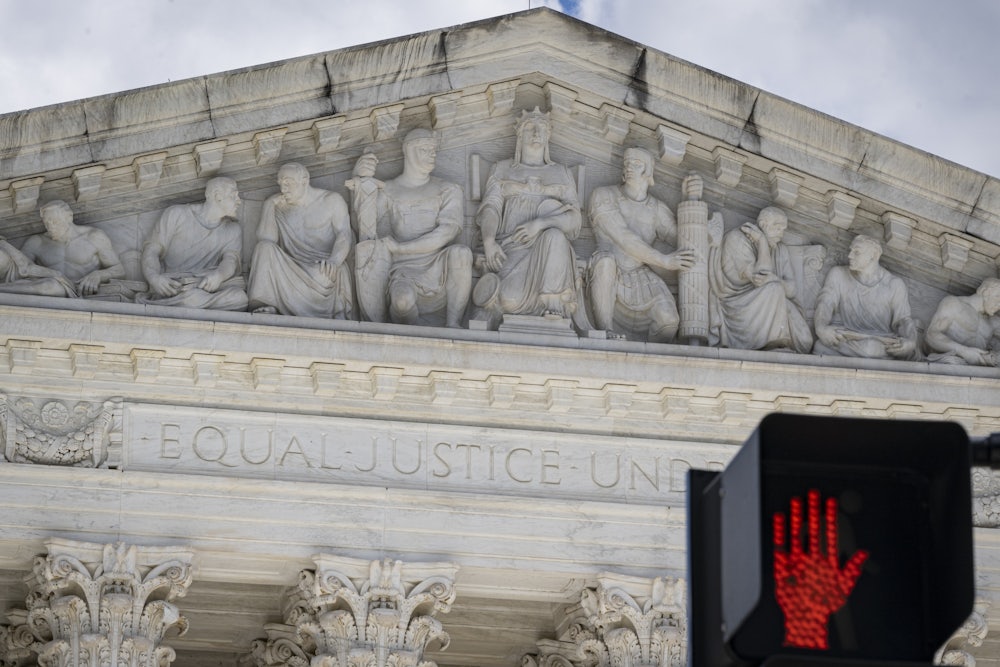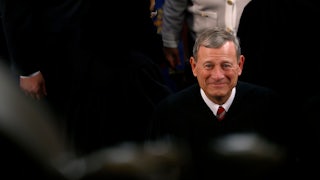On Tuesday the Occupational Safety and Health Administration issued a long-overdue draft standard protecting indoor and outdoor workers from exposure to excessive heat. Forty workers on average die every year from heat exposure. The proposed rule (click here to read the text) requires certain employers to provide workers with 15-minute rest breaks every two hours, to provide drinking water, and to take other commonsense measures.
“It will definitely be challenged” in court if there’s a second Biden administration, Jordan Barab, former deputy assistant labor secretary for OSHA, told me. (If Trump wins, he’ll probably kill the heat standard before it’s issued in final form.) Barab can be certain of that because “every OSHA standard for the past 50 years has been challenged by business interests.” The heat standard “will be the first one to be decided in the post-Chevron era.”
We can’t know, after the Supreme Court’s decision last week in in Loper Bright Enterprises v. Raimondo, whether the courts will uphold OSHA’s heat standard. But we do know it will be much easier for some conservative judge to kill it than it used to be. Loper Bright eliminated “Chevron deference,” a doctrine dating to 1984’s Chevron v. NRDC, which required judges to grant some degree of deference to regulatory agencies in resolving statutory ambiguity. The Loper Bright decision takes that deference away and invites judges who deplore the administrative state to lay waste to regulations they don’t like.
Since Congress never ordered OSHA, when it created the agency in 1970, specifically to write a standard protecting workers from extreme heat—the word “heat” appears nowhere in the statute—business groups will argue that the standard flunks the Loper Bright test. The standard’s defenders will answer in court that OSHA’s founding statute requires it “to set mandatory occupational safety and health standards” and that these should be “reasonably necessary or appropriate.” But who decides what’s “necessary or appropriate”? Before last week, OSHA (mostly) did. Under Loper Bright, a regulation-hating judge can. Let the states decide this, the judge may say, and strike down the standard. Spoiler alert: Red states are already barring local governments from protecting workers from excessive heat.
The heat-injury standard illustrates how Loper Bright may strengthen business’s hand in defeating rules it deems economically harmful (i.e., pretty much all of them). But in weakening the administrative state, Loper Bright will cause much greater economic harm because an economy can’t be strong if it operates without sufficient regulatory guardrails. If, for example, there are no rules to prevent employers from killing workers by exposing them to excessive heat, those employers who address the problem responsibly will be placed at a competitive disadvantage. An economy that requires 40 workers per year to die from heat exposure is not (at least in that respect) strong. It is recognizably backward and weak.
The economic damage Loper Bright causes may prove greatest in a realm that’s much less emotionally fraught: banking. On June 28, Fortune ran a piece by Michael Del Castillo under the headline, “Supreme Court Overturning ‘Chevron’ Decision Could Change Banking Regulation Forever.” Banking, wrote Del Castillo, “is certainly to be among the hardest hit, with agencies including the Federal Reserve System, the Federal Deposit Insurance Corporation, the Office of the Comptroller of the Currency, and the Consumer Financial Protection Bureau all likely scrambling to see how it will impact them.” A headline in American Banker announced: “Banking Law Is About to Get Weird.”
If you believe bank regulators are too strong and need to be taken down a peg, you are likely a bank executive. If you believe bank regulators are too weak, and really can’t afford to be rendered much weaker, then give yourself a gold star for paying attention to the past four decades. Deregulation ushered in the last two banking crises: the Savings and Loan crisis of the 1980s and the financial crisis that ushered in the Great Recession of 2007–2009. Actually, the latter was caused less by deregulation than by the federal government’s refusal to regulate over-the-counter derivatives, but that amounts to the same thing. More recently, the failures of Signature Bank and Silicon Valley Bank followed congressional passage of a 2018 law that weakened oversight of midsize banks and the Fed’s implementation of a 2019 regulation that weakened oversight still further. I’m not aware of a single bank crisis in human history brought on by overly aggressive regulation.
The political scientists Jacob Hacker and Paul Pierson coined a useful term to describe situations like the Clinton administration’s decision to ignore the urgent advice of Commodities Future Trading Commission Chair Brooksley Born and, instead, to let the go-go derivatives market run wild and unregulated. Hacker and Pierson call this “drift.” Drift occurs, Hacker has written,
when the effects of public policies change substantially due to shifts in the surrounding economic or social context and then, despite the recognition of alternatives, policymakers fail to update policies due to pressure from intense minority interests or political actors.
Loper Bright is, among other things, very pro-drift. The more the economy—indeed, all of contemporary life—migrates away from the regulatory mechanisms that govern it, the more the high court likes to shrug and say, “Our hands are tied.” But in the case of Loper it does the opposite, arrogating to judges the power to decide whether new regulations live or die. Now it’s the regulators whose hands are tied.
The biggest bank regulation under consideration right now is a rule proposed jointly by the Fed, the FDIC, and the Comptroller to bring U.S. banks in compliance with an international agreement struck after the financial crisis. The agreement, called Basel III, required banks to build up more capital reserves against a downturn, take on less debt, and respond more quickly to market conditions. The nation’s largest banks would have to increase capital reserves by 19 percent. The banking industry is dead set against the new requirements because they would cut into profits, and it’s managed to get Fed Chair Jerome Powell to promise “broad and material” changes before the rule is issued in final form. Even so, the bank lobby will almost certainly challenge the final rule in court.
How will Loper Bright affect such litigation? The law firm Venable is advising its banking clients that it will strengthen legal challenges based on the 1946 Administrative Procedures Act (which Chevron deference violated, according to Loper Bright) and the “major questions” and “nondelegation” doctrines, which also curb regulatory authority. Loper Bright will also empower banks’ legal challenges to anti-laundering regulations, Venable said, and might help thwart regulating cryptocurrency by the Securities and Exchange Commission.
Daniel Tarullo, a professor of law at Harvard and former Fed governor who led the Fed’s implementation of the Dodd-Frank financial reform law, advised me not to overlook two other Supreme Court decisions from the past week, Corner Post v. Board of Governors and SEC v. Jarkesy. “The one that concerns me the most from a pure banking regulatory point of view is Corner Post,” Tarullo said. Corner Post, which was issued three days after Loper Bright, effectively eliminates the statute of limitations on filing lawsuits against regulations so that companies formed long after they were enacted can challenge them in court. SEC v. Jarkesy, which was handed down the day before Loper Bright, ruled unconstitutional the Securities and Exchange Commission’s use of in-house hearings to impose financial penalties on fraudsters.
Loper Bright, Tarullo told me, worries him least because the statutory provisions that govern financial agencies don’t require much interpretation. “It’s very clear that Congress has told the banking agencies to regulate capital, regulate liquidity,” and so on, he said. “It’s not like interpreting what a single source is under the Clean Air Act,” which was at issue in the 1984 Chevron decision.
But Tarullo also said that, in combination, Corner Post and Loper Bright could encourage litigants to challenge older bank regulations on the grounds that they overstepped statutory boundaries—even though the high court said in Loper Bright that the decision would not apply retroactively. Noting that the more conservative federal judges are already fairly aggressive in their interpretations of Supreme Court rulings, Tarullo said, “You might get some newly chartered bank that brings a challenge to a 20-year old regulation” and lucks out with a justice willing to strike it down on the basis that it was written under the presumption of Chevron deference.
Even if Tarullo is right that economic stability is imperiled less by Loper Bright than by the other two decisions, I hardly call that comforting. Conservatives may tell you that the economy performs better when there are fewer regulations, but the history of banking tells a different story. The Supreme Court just made the U.S. economy less stable, and it achieved this by gumming up the administrative state. See you at the next bank bailout.








